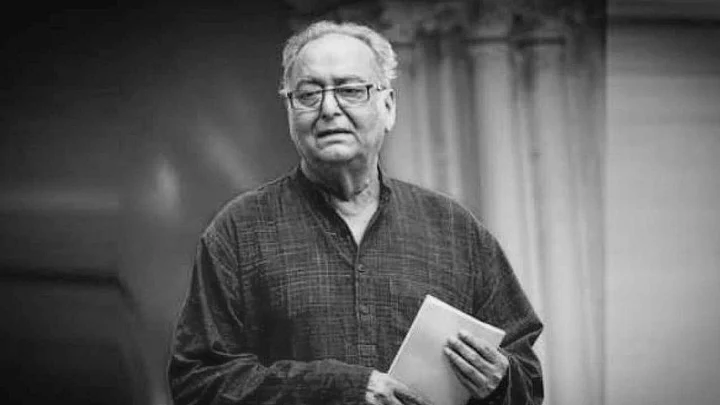For a certain generation of Bengalis, friendships were often defined by one question- are you Team Uttam or Team Soumitra? Your answer would determine your personality and tastes, and Team Soumitra, proudly claim, that they are class above style.
Soumitra Chatterjee wasn't just an actor, he was an institution in himself- one that transcended the boundaries of the film world to that of the world outside, a lesson that the ‘stars’ of today’s world can learn from.
Ray’s Muse Who Remained Bengal’s Secret
Unlike his contemporaries in the Bengali film industry, like Uttam Kumar and Suchitra Sen, Soumitra Chatterjee never ventured out into Mumbai or Bollywood. However, while Uttam Kumar had the star aura and flamboyance, he never did manage to overshadow Soumitra. Based on this theatre-honed acting skills and boy-next-door good looks, Soumitra managed to create a niche for himself.
While he’s known as “Ray’s muse” for doing as many as 14 films with the late Oscar-winning director, Satyajit Ray, not many know that the start of this collaboration was a rocky one. In an interview to The Hindustan Times, Soumitra said that he was initially rejected for the role of Apu in Ray’s Apur Sansar, the third movie in his famous Pather Panchali trilogy.
“Satyajit Ray told me that I didn’t fit the role of a college-going Apu. He needed someone much younger. So, I left that day”, said Soumitra in the interview.
He seemed to have changed his mind, when Chatterjee’s other, now legendary film, Aparajito, went to the Venice Film Festival in 1957 and received the Golden Lion award, the Cinema Nuovo Award and the Critics Award. It was at the press conference at the festival that Ray announced Apur Sansar. Soumitra was to be in the movie.
After Aparajito, he got in touch with me and offered the role of Apu in the third part”, said Soumitra, who at the time, was 22-years-old.
Since then, Ray and Chatterjee, went on to do films together that have formed an indelible part of Bengali film literature, including the crowd-favourite Feluda series, Charulata, Aranyer Din Ratri, Devi and many more.
In the process, Soumitra became an equally indelible part of the Bengali cinematic experience, articulating roles that have since then acquired cult status.
Apart from Ray, he’s also worked with directors like Mrinal Sen, Tapan Sinha and Asit Sen.
An Actor, But Also a Revolutionary
Many would however agree that what set Soumitra apart was the fact he had formidable presence outside the film world as well. At a time when actors are criticized for remaining silent on the face of all social ills, Soumitra has walked the streets with factory workers demanding justice for them, he’s worn his politics on his sleeve, and was a part of street agitations against the Mamata Banerjee government in West Bengal, till even as late as last year, when his health had begun deteriorating.
On paper, Soumitra may have won a lot of what is there to win in the film world. He’s won the Dadasaheb Phalke Award, National Awards, the Padma Vibhushan and even the Chevalier de la Légion d’Honneur - the highest civilian award in France.
What makes Soumitra, well, Soumitra, is that his relationship with these accolades was not that of an average film star. Probably due to his Marxist lineage, Soumitra was, for example, passed on for the National Award many times in his hey days, finally winning it in 2006 for Padakshep, not one of his best works. He’s also passed over the Padma Shri twice, before he accepted the Padma Vibushan in 2004.
It is rare that an actor known for his signature twist in the song ‘Jibone ki pabona’ from the film Teen Bhubaner Paare (1969), was also known for being a voice of protest and reason in an industry that is always under immense political pressure.
But this dichotomy is what made Soumitra a man that had generations of Bengalis rally around him. He was a good-looking man, but not your run-of-the-mill romantic hero. He was a commercial success, but not sold to the market.
In a world where actors still desperately need to grow a spine, India has lost a man who taught Bengal it is possible to be a hero, both on and off-screen. RIP Soumitra Babu.
